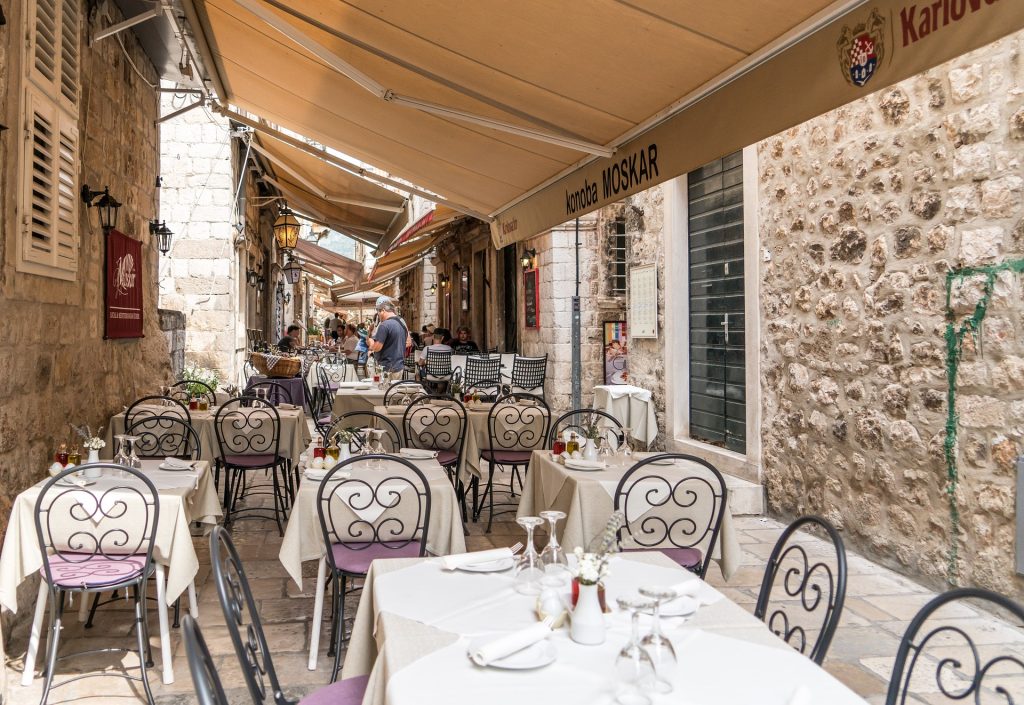April the 9th, 2024 – Croatian employment is on the up as is typical at this time of year when employers are on the hunt for seasonal workers and staff for tourism, catering and hospitality facilities. That said, there are 5% less ads placed now than there were this time last year.
As Poslovni Dnevnik/Jadranka Dozan writes, under the influence of the traditional dynamism of seasonal jobs, Croatian employment measured by the number of insured persons in the records of the Croatian Pension Insurance Institute increased by slightly less than 12 thousand people last month. Almost half of that increase is the result of an increase in the number of employees in the tourism and hospitality industries, and with an increase of about 5,600 people. More than 103,000 people are now employed in these branches.
croatian employment outside of tourism and hospitality

Of the other more significant sectoral blocks in terms of Croatian employment, trade and construction stand out due to increased employment over the past month. In those sectors, the number of insured persons at the end of March was about 1,200 higher than it was just one month earlier, which exceeded 145 in construction and 247,700 in trade.
In several other categories of activities, monthly increases of more than 500 people have been recorded; in addition to administrative and auxiliary service activities and public administration, this also applies to the healthcare sector, as well as to the sectors of transportation and storage. In contrast, in education and in the group that combines professional, scientific and technical activities, the number of employees fell by more than 550 in March. Croatian employment in the processing industry, as the single largest pool of engaged labour with more than 250,000 people, also fell by about a hundred people during that time frame.
the construction sector

The first quarter ended with more than 1.66 million people in various forms of work engagements and accompanying contribution payments. Compared to the end of last year, this is an increase of almost 17,000 employees. Annual Croatian employment growth continues to be led by the construction and tourism and hospitality sectors.
Despite the fact that Croatian employment growth (however seasonal in its nature) is clearly continuing, at the same time, the online vacancy advertising market suggests that the demand for labour is losing pace. The latest values of the OVI index (Online Vacancy Index), which are monitored and published monthly by the Zagreb Institute of Economics in cooperation with the MojPosao/MyJob portal, claim that the demand for workers in the first quarter of this year has been somewhat weaker than it was in the same period last year.
In all three months of the first quarter of 2024, the values of the OVI index in year-on-year comparisons recorded a decrease, and on average more than 5 percent (which is the deepest minus in the last three years). EIZ analysts pointed out that the highest increase was recorded just last month, and it stood at 8.2 percent. A higher annual rate of decline was last recorded more than three years ago, or, to be more precise, 37 months ago.
there’s been a cool down for the hunt for developers

Of the usually most in-demand occupations, which are salespeople, waiters, chefs, people to work in stops and drivers, the drop in demand in annual comparisons in March wasn’t only recorded for chefs. The biggest contribution to the fall of the OVI index was the decrease in the demand for teachers, and it was also contributed by the fall in the advertising of vacancies for programmers, IT specialists and mechanics.
The latest indicators of the demand for employees showcased an additional increase in the share of advertisements looking for medium-skilled workers (more than 65 percent of them), while for those with low qualifications, it fell below 14. For those with higher education under their belts, it fell to about 20 percent.
Commenting on the latest findings at the Institute, they highlighted that with regard to the types of contracts offered to workers, the most pronounced decline has been recorded by fixed-term ones (with an annual decrease in the number of advertisements by 13.7 percent). In addition to that, when observed by region, there’s been less online advertising of the need for workers than last year, but that decline is most pronounced in central Croatia and in the northern Adriatic region (by less than seven or 15 percent).










